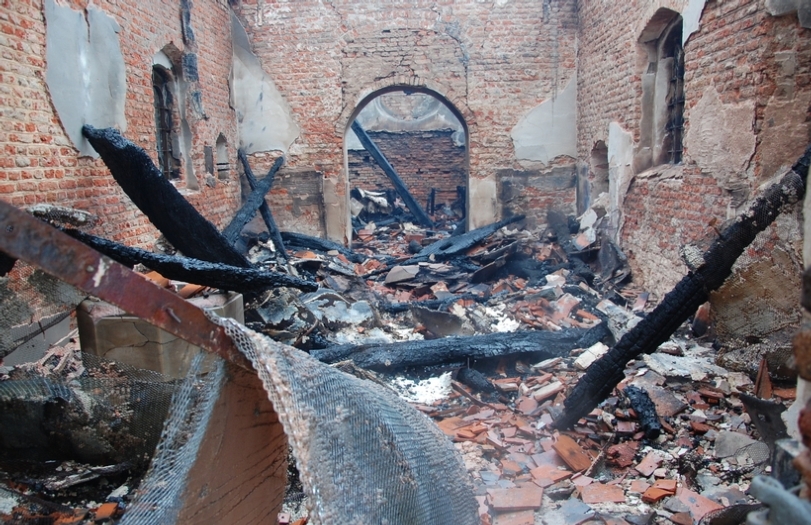Heartbreaking fire at Goltho
St George’s Church in Goltho was beloved by John Betjeman and built on an old settlement long since lost. The name 'Goltho’ is said to be Saxon for 'where the marigolds grow’. Inside, the Tudor church was an atmosphere of calm and simplicity, with rustic wooden pews, an altar screen and a simple two-decker pulpit.
Among the features destroyed in fire on Sunday (20 October 2013) was the nave complete with mullioned windows dating back from the sixteenth century, a Victorian bellcote containing a bell recovered from the church of St John the Baptist at Amber Hill, and the chancel - an early eighteenth-century addition to the church containing a Queen Anne period reredos.
Unique items dating back to the Medieval period were also lost in the blaze. This includes a seventeenth-century inscribed ledger stone in the floor of the nave to Thomas Grantham of the local fourteenth-century merchant family, and other stone ledgers - one in the shape of a coffin; another acting as a doorstep to the church.
The building, in our care since 1978, had experienced a huge increase in visitors over the past year, as part of our ArChWay tourism project, but thankfully the church was empty at the time of the fire and no one was hurt.
Rosi Lister, Director – North for The Churches Conservation Trust said of the fire:
“We are utterly devastated at the loss of this rare, Tudor brick-built church; the only remaining building from a long-lost settlement. To lose this church is to lose an entire repository of social history, a part of the English landscape and an irreplaceable work of art. Like all our churches, St George’s gave local people a chance to learn about their past and their ancestry. It is a sobering reminder of why churches are so important and we urge volunteers and donors to come forward and help us protect and preserve what we have left of our unique celebrated history.”
Once the remains are safe we will assess the damage and the extent of the conservation loss, further investigation may involve an archaeological survey.
Lincolnshire Fire and Rescue Service has now closed the case and concluded that the cause of the fire is undetermined.

